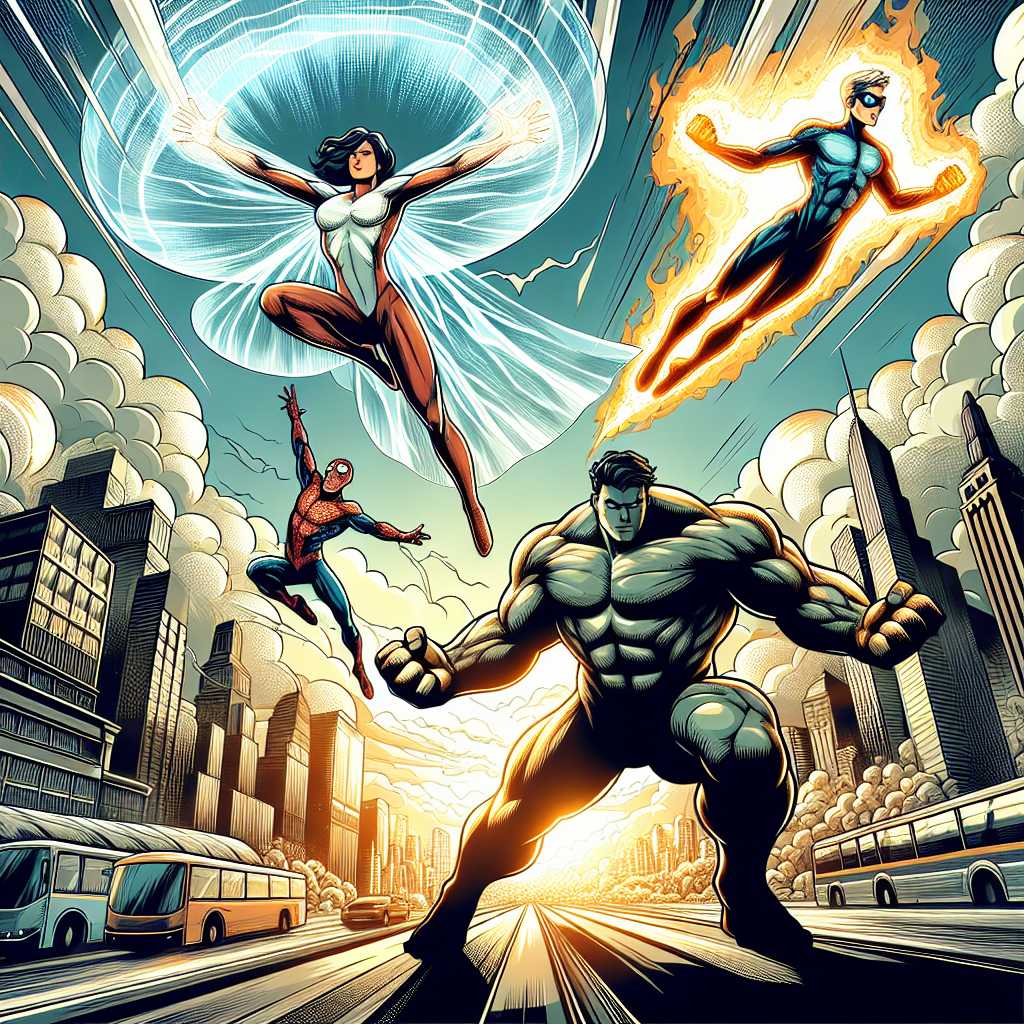The Resilient History of the Fantastic Four: Marvel’s Original Superhero Team
Marvel Comics’ Fantastic Four, also known as “The First Family” of superheroes, has had a profound impact on the superhero genre and remains a cornerstone in comic book culture. Since their debut in 1961, the quartet of characters has seen various adaptations, including animated series and feature films.
Origins and Cultural Significance of the Fantastic Four
Early Development and Debut
Created by comic book legends Stan Lee and Jack Kirby, the Fantastic Four was Marvel’s answer to the growing interest in superhero teams of the early 1960s. The team made its first appearance in “The Fantastic Four #1,” heralding a new era of more human, relatable superheroes. Unlike their counterparts, the members of the Fantastic Four were a family—often bickering, supporting each other, and facing everyday issues alongside their incredible adventures.
Influence on Comic Books and Pop Culture
Beyond their interesting dynamics, the Fantastic Four marked a significant departure from the archetypical heroes of the past. They did not conceal their identities with masks or operate covertly—their powers and heroic feats were publicly known. This transparency lent itself to an array of stories that addressed celebrity culture, authority, responsibility, and highlighted human emotional depth.
From battling interstellar threats to traversing alternate realities, their stories have been a testing ground for expansive concepts in superhero narratives. The family dynamic also introduced a domestic element to superhero stories that was previously unseen.
Main Characters and Powers
The core characters of the Fantastic Four consist of Mr. Fantastic (Reed Richards), Invisible Woman (Susan “Sue” Storm), Human Torch (Johnny Storm), and The Thing (Ben Grimm), each possessing unique abilities gained during an experimental outer space flight hit by cosmic radiation.
Mr. Fantastic – Reed Richards
Reed’s ability to stretch his body into any shape is symbolic of his flexible intellect; he serves as the team’s leader and brainiac who invents gadgets and dedicates himself to science and discovery.
Invisible Woman – Susan Storm
Sue’s powers extend from invisibility to creating force fields. Initially, her character started out as a damsel needing rescue but evolved into one of Marvel’s most powerful characters with nuanced storytelling highlighting her resilience and power.
Human Torch – Johnny Storm
Johnny possess pyrokinesis, the ability to control and produce fire. He can engulf his body in flames without harm and fly. His fiery personality is known for its reckless impulsivity but he’s also shown growth into a steadfast hero over time.
The Thing – Ben Grimm
Ben transforms into a rock-like creature with superhuman strength and durability. His physical transformation brought deep philosophical elements to comic books about identity, self-image, and humanity.
Adaptations Beyond Comics
Despite its significance, “The Fantastic Four” has undergone various transitions in media representation from animated series starting in the ’60s to contemporary movies.
Feature Films
Their silver screen journey began in earnest with films released in 2005 (“Fantastic Four”) and its sequel in 2007 (“Fantastic Four: Rise of the Silver Surfer”) followed by a reboot in 2015 (“Fantastic Four”). Each adaptation approached character dynamics and cavalcade of quirks in different ways with varying degrees of success both critically and commercially.
Animated Series
Animation served as a faithful medium for capturing the limitless possibilities of “The Fantastic Four’s” comic adventures. Starting from 1967’s eponymous series, up through recent animated endeavors, various series have showcased their exploits with more fidelity to the source material.
Cultural Impact
Despite diverse responses to adaptations over time, their status as pioneer superheroes endures. Classes on popular culture study them; they’re used to discuss family dynamics in literature; they helped to spur discussions on how media tackles subjects like scientific exploration and collective personas.
Notes
- The Fantastic Four made their comic book debut on November 8th, 1961.
- Stan Lee intended for the group to be relatable characters placed in extraordinary circumstances.
- Doctor Doom is one of the most iconic villains introduced in “The Fantastic Four” series.
- The Invisible Woman was acknowledged as one of the earliest feminists icons in comic books due to her equitable role amongst her male peers as time progressed.
- Jack Kirby’s art played a significant role in defining early notions of what dynamic comic book action would look like.

